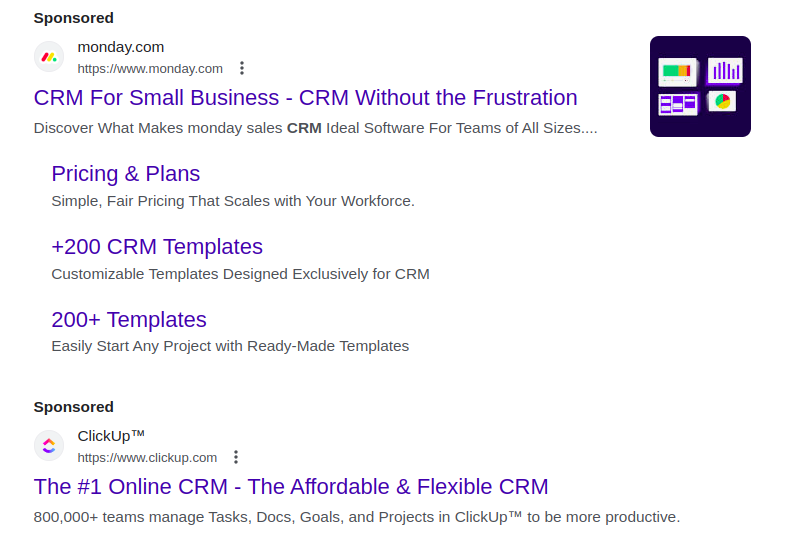In business, especially in the modern day, best practices shift constantly, and you can rarely predict what the norm will be in the next five years. Better yet, you might not know what the standard of positioning, marketing, and sales is in your own industry if you don’t pay close attention.
To understand how to succeed in any industry, you have to analyze competitor activity and draw your own conclusions on what works and what doesn’t. It’s far from easy, but necessary for running a successful business.
In this article, you’ll learn everything you need to know on how to do competitor analysis, from finding out who your competitors are to implementing meaningful change based on those findings.
What is competitor analysis?
Competitor analysis is the marketing and business practice of analyzing every aspect of competitor activity, from their paid ads and SEO strategy to their product and model of distribution. Some aspects of competitor analysis can be more accurate than others, but even if there’s an element of speculation present, analyzing your competition is important.
Studying your competitors grants you insight into how your product and marketing strategy are different from theirs. This lets you either mimic their strategies that perform well or find a key area where your business is better.
Doing an analysis regularly will let you know how the market is evolving and how you can improve your strategy to fit in.
Competitor analysis process breakdown
Analyzing your competition is a meticulous process that has many stages and many techniques. Here’s where to start.
Determining who your competitors are
Before you can analyze your competitors, your first task is to identify who they are. Your competitors are businesses that sell similar products or market to a similar audience. They might either be already well-established or trying to win a share of the market from the ground up.
You need to compile a long list of potential competitors of all sorts. Both established and new competing businesses are of interest to you. Even though new businesses might not work out in the end, they can provide insight into new ways of marketing similar products or alternative ways to position yourself.
For most ecommerce, SaaS, and other online businesses, your competitors are businesses that either appear organically or pay for advertising on search engines or social media for searches related to your products. If you’re running a business with a physical store, you’re going to have to consider the location as well.
Here’s how you can find your competitors:
- Do a Google search for your industry or products
- Search social media hashtags related to your products
- Browse social media to see sponsored posts for similar products
- Visit local business directories
- Visit software marketplaces
- Visit review platforms
- Use an SEO analytics tool
Now, let’s look at each of these options in more detail.
The first and easiest thing you can do to find competing websites is to do a Google search. You can search for your main keyword or for keywords related to your products or services.
You’ll have to copy the first few pages of the SERP to your document for each request. Make sure not to miss paid search results, as they are important for figuring out your competition as well.

Source: Google
You can automate this process to a degree with a web scraper tool or Google Apps Script.
Previously, you could use the search operator “related,” however, Google discontinued it earlier in 2023. You can still use it, but it only returns results for larger sites, which may not be as consistent or helpful.
Instead, you can do a search like “websites like yoursite.com” and get an answer from Google Search Generative Experience.

Source: Google
Note that it’s in early beta and only available in the US, so the answers you get from the generative AI may not be perfect.
A better way to find competing websites is to look for them on websites that list businesses. It can be a local business directory, an industry association website, a review website, or a marketplace website. You can check out your competitors on websites like Crunchbase, Capterra, TrustRadius, G2Crowd, and Product Hunt.
You can also search for “your site/competitor alternative” to find multiple lists of your top competitors.
One of the most convenient ways to find competing websites is by using a competitor website finder. This type of SEO tool can analyze your site and show competing websites based on the keywords that you rank for together.

Source: SE Ranking
This will give you an exhaustive list of competing websites based on your keywords. The toolset can then be used to analyze the competing websites further, taking a look at which keywords they rank for, what their on-page optimization looks like, which sites link to them, along with many other insights into their SEO and PPC strategies.

The 4P research model
When you have a list of competitor websites, you have to analyze their business models. The most straightforward way to do that is with the 4P model — Product, Price, Place, and Promotion. Each is equally important, so it doesn’t matter where you start.
Product
When doing a product analysis, focus on these factors:
- What types of products are they selling
- How do they differ in quality from yours
- How these products are positioned
Apart from browsing through their product list and making a good faith judgment, you can check out their reviews, especially on third-party websites, to evaluate product quality.
For services, examine the features of the service, what problems it solves for users, and how the offer differs from yours.
Again, if you don’t have the time to see the competitor’s demo or freemium version yourself, you can go to a trustworthy review website to read about any possible drawbacks of their services.
Price
In terms of pricing, you’ll want to learn the following:
- The pricing model (one-time purchase, freemium, tiered, hybrid, etc.)
- How the pricing compares to similar offers
- How frequently the company issues discounts
- Price-to-quality ratio
While the majority of these points can be figured out by going through the competitor’s pricing policy, you can’t typically find information about the discounts on coupon and discount sites. You could also subscribe to their email list and see how often you get a promotional offer.
Place
If it’s an ecommerce store, you have to understand whether the competitor sells mostly through their online store or if they have physical locations. You should also examine whether the competitor sells the products on the platforms they own (like their website and their LinkedIn page) directly to customers or if they sell them to wholesalers and distributors.
For online-first businesses, it’s easier because you won’t have to go to the actual store, although you still have to figure out what platforms they are using to make sales. It can be as easy as visiting their websites and paying attention to the platforms they link there.
It would be great to know who your competitor’s suppliers are, and how the products get shipped, but it’s not always possible to learn.
Promotion
Analyzing this part of a competitor’s strategy can be quite time-consuming since you can get a lot of data on a competitor’s marketing strategy by using a variety of tools.
You can employ SEO tools to figure out a competitor’s SEO strategies from the keywords they rank for to the links they build. Such tools can also show you how they use search ads. Display advertising will be more difficult to figure out though.
Go through their site and judge how well their website content is written and whether their blog has CTAs trying to convert visitors. You can implement their tactics; even better, you can hire a distinguished content marketing agency to drive growth through content marketing.
Social listening tools can estimate how well competitors’ organic posts are doing and give you insight into their social media paid ads campaigns.
Competitor analysis in email marketing is a bit more hands-on as you’ll likely have to subscribe to their emailing list, and maybe get a freemium version or a free trial and receive their emails for a couple of months. You can ignore them and then analyze them in batches.
You can also talk to the company’s sales rep to see what their strategy is for selling their product on a call or in an email thread.
With all that information, you want to pinpoint the following about each competitor.
- What sales channel do they prefer
- Do they have an unorthodox strategy that seems to work
- How do they position their product
- What is their unique selling proposition
- How does it differ from yours
Since competitor analysis of the 4Ps is quite time-consuming, you can analyze competitors selectively. You can pick some of your top competitors, a few businesses that have just started out, and a few mid-pack businesses to have a clearer picture of the competition as a whole.

Perform a SWOT Analysis for Your Competitors
Once you have a list of competitors with notes on all 4Ps, you can then do a SWOT analysis of them. SWOT stands for Strengths, Weaknesses, Opportunities, and Threats. It’s a classic type of business analysis that can turn all of the data about your competitors into a short and easy-to-understand form.
For each of the competitors you’ve analyzed so far, create a table with each component of SWOT and write down their stronger and weaker sides.
You can then create a similar table for your business and see how you compare with the others. It’s important to stay objective here and not paint your business as the best among the competition.
Develop or Improve Your Strategy
Based on these findings, you can start to improve your strategy.
You may decide that to be competitive, you need to add more features to your product or a new selection of products to your ecommerce store. You may learn that the competitor is doing cross-platform PPC and decide to give that a try. You might realize you’ve overlooked email marketing potential and need to implement personalized campaigns to outshine competitors. Or you may find out that in your industry, SEO is the name of the game, and you haven’t been investing enough in that.
Whatever the case may be, adjust your strategy based on what you see on the market and monitor its performance. It’s best to do A/B testing of multiple ideas to figure out what will work best.
Track competitor activity
Now, the last thing you have to do is to develop a workflow that lets you analyze your competitors’ activities constantly. Some elements can be automated, for instance, you can configure alerts in your SEO software to show when a new company has entered the top 10 of the SERP for a select keyword.
Competitors’ changes in their product, pricing, or positioning can only be analyzed manually, though. You can set up reminders to check on your competitors each quarter and develop a checklist of things to look at.
This will make sure you’re up to date on the current trends in the industry.
Summary
Analyzing competitor activity is hard work, but it’s the only way you can stay informed of any changes in the industry.
How to do competitor analysis? Find out who your competitors are, analyze their 4Ps, make a comparative SWOT analysis, and implement changes based on your findings.
Monitor how your improved strategy performs and change it or revert back if it’s not showing good progress. Keep in mind that small marketing changes can be easily adjusted, but a major shift in your products or positioning is much harder to implement.


